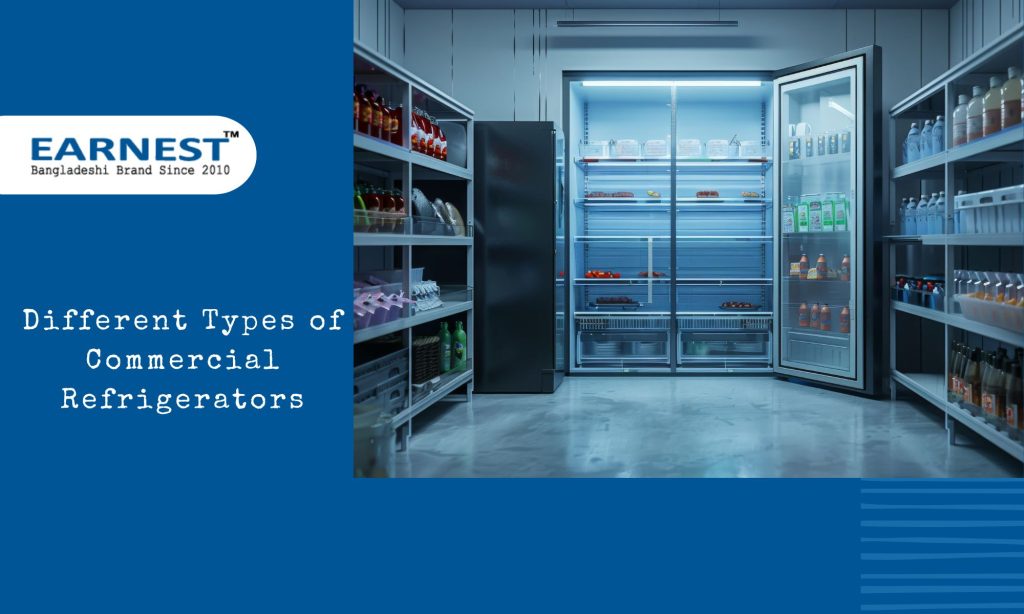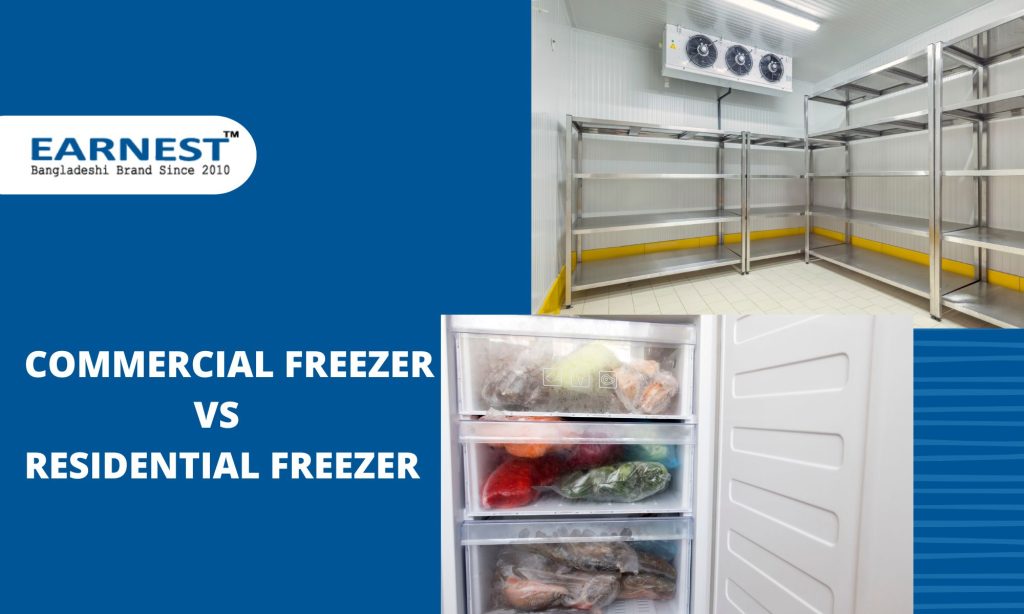The cold storage rooms are an important part of any industrial or commercial setup with perishable goods. Ensuring it has a robust refrigeration system with properly functioning quality components is crucial.
In this article, we will go over two extremely important parts of a refrigeration system, the condenser, and the evaporator, and try to learn their importance and use.
How Does the Refrigeration System Work in a Cold Room?
The cold room, where various goods and materials like food are stored, needs a refrigeration system to keep it cold. The refrigeration system works by continuously releasing heat from the cold room to the environment. The system does this by primarily 4 functions in a cyclic pattern:
Compression: The refrigerant gas enters the compressor, which raises its pressure and temperature.
Condensation: The high-pressure, high-temperature gas moves into the condenser, where it cools and condenses into a liquid.
Expansion: The liquid refrigerant passes through an expansion valve, dropping in pressure and temperature.
Evaporation: The cooled refrigerant enters the evaporator inside the cold room, absorbing heat as it evaporates and returns to a gaseous state.
This process keeps on going in a cycle, maintaining the desired temperature inside.
You may read about the maintenance checklist of cold rooms to know how these are sustained.
What are the Components of a Refrigeration System?
The components of the refrigeration system are as follows:
Refrigerant | This is fluid that circulates throughout the refrigerant system, absorbing and releasing heat during phase changes. This transforms into a gaseous component, which can be ammonia, freon, or CO₂. |
Compressor | The compressor in a cold room reciprocates the use of a piston to create movement of the refrigerant gases at high pressure. They are used in small capacities. The compressor is at the core of the refrigeration system as it compresses the refrigerant gas to increase its temperature before arriving at the condenser. |
Condenser | The condenser works as a heat exchanger. This is the place where the heat from the refrigerant is transferred to a flow of water that goes to a cooling tower. The condenser constantly pressurizes the refrigerant, turning the hot gas into a liquid. |
Expansion Valve | In this component, the refrigerant gas expands, releasing pressure. It also faces a temperature drop. The refrigerant leaves this part as a liquid-vapor mixture. The expansion valves ensure the pressure is regulated and control the amount of refrigerant gearing up to enter the evaporator. |
Evaporator | The refrigerant becomes a gas in an evaporator and absorbs heat. It is at a lower temperature here. Then, the refrigerant enters the compressor where the process restarts and the cycle continues. In the evaporator, the cooling fan circulates the low temperature of the refrigerant. This sets the temperature of the cold room. Also, the evaporator with the cooling fan reduces any unwanted temperature variations. |
Let’s now look at the types of the two key components of the refrigeration system: condenser and evaporator.
Types of Condensers
There are generally three types of condensers used in refrigeration systems.
Air-cooled Condensers
An air-cooled condenser operates by dissipating the refrigerant’s heat. This facilitates the refrigerant to become liquid from a gaseous state. The design of this condenser features a fin coil composed of copper tubing and fins, which are there to enhance the coil’s surface area. This expansion allows adequate heat dissipation from the refrigerant.
Water cooled Condenser
Another type, the water-cooled condenser, uses water to cool off the refrigerant, converting it from a gas to liquid. This process stirs a rise in the water temperature when it absorbs the heat from the refrigerant.
Evaporative Condenser
The third type of condenser called an evaporative condenser, uses a mix of water and air to transfer heat from the gaseous refrigerant to its liquid state. The method behind this condenser type is the integration of a water-cooled condenser and a cooling tower into a single unit.
Types of Evaporators
Evaporator types depend on their airflow, build, or how to work.
Flow of Air
The natural convection and the forced convection evaporators are classified by their airflow. The former naturally move up the air, mounted on height. The latter uses an external pump or fan to move air during the heat transfer phase.
Based on Build
A common type of evaporator based on build, used in industrial areas is the plate type evaporator. These consist of aluminum or copper plates embedded with each other. The refrigerant flows between these metal tubes for the refrigeration process. Plate evaporators are commonly used for food cold storage and other industrial setups.
Other types based on construction include bare-tube evaporators and finned evaporators.
How it Works
The third category of evaporators is distinguished by how they operate. These evaporators include the Falling Film evaporator, in which liquid falls from the top of a tube wall and evaporates. Also, a Nucleate Fluid evaporator is another type where it works like a boiling fluid.
Besides these, there is the Flash evaporator used in seawater desalination plants and Direct Contact evaporators used to evaporate corrosive and viscous liquids.
Why are Condensers and Evaporators Important?
Condensers and evaporators have a direct impact on how well the refrigeration system works, which in turn affects the cold room temperature. Some vital reasons that make these two components highly important are:
Energy Efficiency:
When the two function properly, energy consumption is reduced. This happens because effective heat exchange occurs and heat is removed to the outside. .
Temperature Stability:
As efficient heat exchange takes, this keeps the cold room temperature in check and how it should be to maintain the goods.
Product Quality:
Adequate temperature and a clean environment help ensure the freshness and safety of perishable goods. This is particularly important in the case of food products, which expire fast unless kept fresh.
System Longevity:
Well-maintained and optimized condensers and evaporators help mitigate strain on the compressor and other parts of the refrigeration system. This eventually prolongs the system’s lifespan and keeps the cold room the perfect storage place for a long time.
As you can see, all these reasons for importance are interconnected and work like a process to keep the cold rooms in good condition and shape.
Installing Condensers and Evaporators for Cold Room
Purchasing condensers and evaporators for your cold room is not an easy decision. You need to consider factors like price, longevity, quality, efficiency, materials, etc. This is where expert cold room suppliers like Earnest come into play.
You can get a full read on Things To Consider While Buying Cold Storage.
To meet the customers’ cold storage needs, Eearnes supplies a complete range of cold rooms including warehouse cold storage and walk-in cooler units. Because chilling or freezing requirements vary as per buyer, they supply cold storage units either in pre-fabricated units or specially fabricated, depending on needs.
Earned also offers top-rated condensing units that will help you condense any gaseous substances back into their liquid form. In addition, Earnest supplies the best Evaporator Units in Bangladesh, which can be used to turn any liquid into a gaseous form.
To Wrap Up
Keeping the cold room as adequately cold as possible is a significant task. Thus, the refrigeration system should be maintained and administered well. Its all-important parts like the condenser and evaporator should also be bought and maintained with expert help.
For a top-quality supply of industrial condensing and evaporator units and expert advice on them, you can reach out to Earnest.






